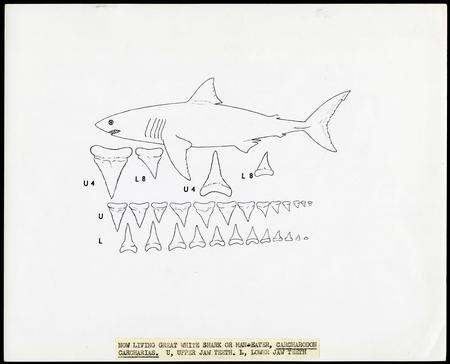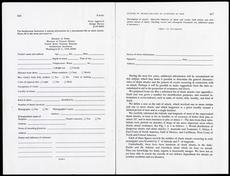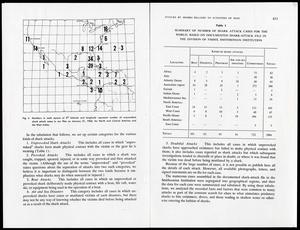
Shark attacks on the increase! Any time this headline flashes it instills fear in the hearts of swimmers and beachgoers everywhere. Have you ever wondered how we know how many times sharks have attacked humans and where that data has been compiled? Well, at the Smithsonian of course, where we do just about everything!

In 1958, Smithsonian ichthyologist Leonard P. Schultz and Cornell University professor Perry W. Gilbert established the Shark Research Panel to track reports of shark attacks and search for an effective shark repellant. The Shark Research File was maintained at the National Museum of Natural History (NMNH) during its first decade and then transferred to the Mote Marine Laboratory in Florida, which Gilbert then headed.

World War II, especially the Pacific Theater, had stimulated a great deal of interest in sharks and shark attacks. Military personnel left adrift reported numerous attacks by sharks while awaiting rescue – if they were lucky enough to survive. The US Navy provided sailors with a product called "Shark Chaser," a purplish dye that would confuse sharks when spread out in the water, and that provided some protection for a few hours. On April 8-11, 1958, thirty-four participants met for a conference on sharks at Tulane University in New Orleans. Following that meeting, with support from the Office of Naval Research and the American Institute of Biological Sciences, Gilbert and Schultz created the Shark Research Panel on June 25.

Schultz maintained the shark attack file at the NMNH from 1958 until his retirement in 1968, compiling information about each shark attack and following up with additional questions. When a shark attack was reported, a physician or scientist in the area was immediately asked to obtain documentation on the attack by submitting a two-page form with questions such as location, environmental conditions, kind of shark, nature and treatment of wounds, and type of activity the victim was engaged in at the time of the attack.

For the first year, 1959, they compiled information on 36 attacks where sharks made physical contact with victims and analyzed the circumstances. They also offered advice, noting that sharks usually circle their victim before an aggressive attack, giving the swimmer time to get back to their boat or shore. They urged calm, since frenzied motion was more likely to attract sharks. They also noted that it was far more likely a person would be struck by lightning than attacked by a shark, but acknowledged that shark attack victims often bled to death before they could be rescued.
I conducted an oral history interview with Dr. Leonard Schultz in 1976, the year after Jaws hit the theaters, and we discussed his role in shark attack research. Schultz was pleased that more people were aware of the potential for shark attacks but concerned over the sensationalism the film provoked. He was also concerned about the negative image of sharks the movie created.
With Shark Week taking over your television, you probably won’t remain calm or need shark repellant, but if you head to the beach or out on a fishing boat, remember their advice so you don’t become another shark attack file statistic!
Related Resources
- Leonard Peter Schultz (1901-1986): Ichthyologist and Field Naturalist, National Museum of Natural History
- Shark Attack File, Smithsonian Encyclopedia
- Ocean Portal: Sharks & Rays, National Musum of Natural History
- The Shark Attacks That Were the Inspiration for Jaws, Smithsonian Magazine
- Shark Week Song, by Marian Call
Related Collections
- Record Unit 7222 - Leonard Peter Schultz Papers, circa 1915-1970, with related papers from 1899, Smithsonian Institution Archives
- Record Unit 9510 - Oral history interview with Leonard Peter Schultz 1976, Smithsonian Institution Archives
Produced by the Smithsonian Institution Archives. For copyright questions, please see the Terms of Use.

Leave a Comment